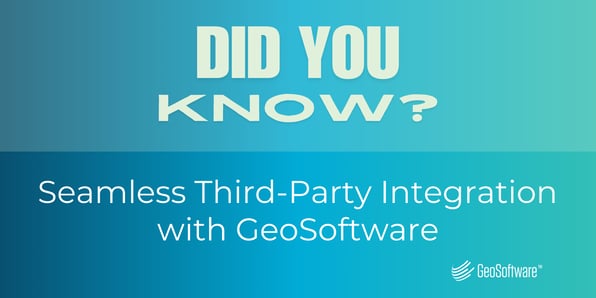
In the fast-paced world of reservoir characterization, efficiency is key. But did you know that GeoSoftware 2024.3 offers efficient data integration between HampsonRussell and Petrel, giving you more flexibility, speed, and precision in your workflow?
Let’s walk through how the GeoSoftware 2024.3 Petrel plugin enhances your reservoir management experience with a demo video below by GeoSoftware Expert and HampsonRussell Product Manager, Ruth Kurian.
Watch this demo video of the GeoSoftware 2024.3 Petrel link in action on a reservoir characterization project.
Keep reading on for tips and tricks to help you make the most of the GeoSoftware Petrel plugin.
Seamless Data Transfer in Just a Few Clicks
One of the powerful features of GeoSoftware 2024.3 is the ability to quickly transfer data from Petrel to HampsonRussell. Whether you’re working with seismic volumes, horizons, or wells, the plugin allows you to move data with ease. In the demo video above, we showcased how to transfer seismic volumes—including sub-stacks—and even multiple wells with just a few clicks.
Here’s a tip: When transferring seismic data, you have the option to either copy it (freeing up your Petrel license) or create a live link for continuous updates. Choose the option that best suits your project needs.
Handle Large Volumes with Ease
Dealing with large datasets? No problem. You can import seismic data by zones, making it easier to handle massive volumes without bogging down your system. Set up specific zones around wells to focus only on the data that matters most for your analysis. This trick can save valuable time and computing power when working with complex data sets.
Best-In-Class Well Ties in HampsonRussell
Tying wells to seismic is essential for accurate analysis. The GeoSoftware 2024.3 plugin enables users to transfer data from Petrel to HampsonRussell and leverage its best-in-class well-correlation tools, including multi-well correlation for efficiently tying multiple wells. With integrated quality control (QC) features, HampsonRussell ensures that your well ties are precise and reliable.
Pro tip: After importing wells, use the multi-well correlation tool to bulk shift and align well tops with seismic horizons for better accuracy. Additionally, you can fine-tune the alignment by using one of the many built-in wavelet extraction options.
QC and Correlation: Fine-Tune Your Results
One of the advanced features we highlighted in the demo is the ability to QC your well ties using drift curves, velocity changes, and corrected two-way time. A helpful trick here is to scan for phase rotation, which can significantly improve your correlation percentage by matching the phase of the seismic. In our demo, a small phase rotation, verified by other well-ties, boosted correlation by over 10%. It’s a small adjustment, but it can make a big difference in the accuracy of your analysis.
Exporting Tied Wells Back to Petrel
Once your wells are tied and adjusted, you can easily export them back to Petrel, including the updated depth-time relationships. This keeps your data consistent across platforms and ensures that your Petrel models are up-to-date with the latest information.
A tip for smooth exporting: Double-check that you're only exporting the necessary logs, such as the depth-time log, to avoid cluttering your Petrel project with redundant data.
Ready to Streamline Your Workflow?
By utilizing the GeoSoftware 2024.3 plugin, you can dramatically reduce the time spent moving data between platforms, allowing you to focus more on interpretation and decision-making. The real-time link between HampsonRussell and Petrel keeps your projects agile and adaptable, giving you an edge in the fast-paced reservoir management environment.
With these tips and tricks, you’re well on your way to unlocking the full potential of your software package. Ready to streamline your workflow? Contact us to give the GeoSoftware Petrel link a try and experience the difference for yourself!

